section-be9be47
Famous Memorials in Cedar Grove Cemetery
Nathan Belcher
Nathan Belcher
Birth 23 June 1813 Preston, Connecticut
Death 2 June 1891 age 77
U.S. Congressman. He graduated from Amherst College, in 1832, studied law at the Cambridge Law School, was admitted to the bar in 1836 and commenced to practice law in Clinton, Connecticut. He also engaged in manufacturing tools, hardware and kitchen utensils. He was a member of the Connecticut State House of Representatives, (1846-47) and served in the Connecticut State Senate, in 1850. In 1853, he was elected as a Democrat to the Thirty-third Congress, serving until 1855. Not a candidate for re-nomination, he resumed his former manufacturing interest until his death at age 77.


Theodore Bodenwein
Theodore Bodenwein
Birth 25 Jan 1864 Germany
Death 1939 age 74-75
Theodore Bodenwein - Bodenwein came to America in 1869. He apprenticed in the offices of the newly founded New London newspaper, The Day, in 1881. Bodenwein ended up later buying the paper and he ran both The Day and another city newspaper, The Telegraph, from the same offices shortly after the turn of the 20th century. A year before his death in 1939, Bodenwein’s will transferred ownership of The Day to a trust that would operate the paper and provide money for local charities in perpetuity. For many years after his death, an anonymous person daily delivered a copy of The Day to Bodenwein’s grave.
Plot Section 23


Mary Lydia Bolles Branch
Mary Lydia Bolles Branch
Birth 13 June 1840 New London, Connecticut
Death 17 April 1922 age 81
Author. Writer of stories for children. Some of her books are "The Kantor Girls," "The Old Hempstead House," "Home of Eighth Generations," and "The Manner of Life of Nancy Hempstead."
Plot Section 20


Augustus Brandegee
Augustus Brandegee
Birth 12 July 1828 New London, Connecticut
Death 10 Nov 1904 age 76
US Congressman. He graduated from Yale College in 1849, from Yale Law School in 1851, was admitted to the bar and commenced practice in New London, Connecticut. He was a member of the Connecticut State House of Representatives, (1854, 58-59, 61). In 1863, he was elected as a Republican to the Thirty-eighth and Thirty-ninth Congresses, serving until 1867. Not a candidate for reelection, he was a delegate for the Republican National Conventions, (1880-84) and attorney for the corporation counsel of New London, Connecticut, (1897-98). U.S. Congressman and U.S. Senator Frank Bosworth Brandegee was his son.
Plot Section 10


Frank Bosworth Brandegee
Frank Bosworth Brandegee
Birth 8 July 1864 New London, Connecticut
Death 14 Oct 1924 age 60
US Congressman, US Senator. He graduated from Yale College in 1885, studied law, was admitted to the bar in 1888 and opened a legal practice in New London, Connecticut. He served as a member of the Connecticut State House of Representatives in 1899 and was chairman of the Republican State convention in 1904. In 1902, he was elected as a Republican to the Fifty-seventh Congress and to the next two succeeding Congresses. He resigned from his seat in Congress in 1905, when elected a United States Senator and served until death at age 60.
Plot Section 10


Frances Manwaring Caulkins
Frances Manwaring Caulkins
Birth 26 April 1795, New London, Connecticut
Death 3 Feb 1869 age 73
Frances Manwaring Caulkins - Caulkins traced her ancestry to the early settlers near Plymouth. Always determined to support herself, she established a school for young women in Norwich in 1820 and later took charge of a female academy in New London. A writer, genealogist and historian, she was the first woman elected as a member of the Massachusetts Historical Society, the oldest historical society in the country. Her legacy includes two comprehensive local history books - one of Norwich and the other of New London. She died in 1869.
Plot Section 3

Joshua Coit
Joshua Coit
Birth 7 Oct 1758 New London, Connecticut
Death 5 Sept 1798 age 39
US Congressman. He graduated from Harvard College in 1776, studied law, was admitted to the bar and commenced to practice law in New London, Connecticut, in 1779. He was a member of the Connecticut State House of Representatives (1784-85, 1789-90, 1792- 93) and served as floor speaker in 1793. In 1793, he was elected as a Pro-Administration candidate to the Third Congress, reelected as a Federalist to the Fourth and Fifth Congresses, serving until his death at age 39.
Plot Section 3
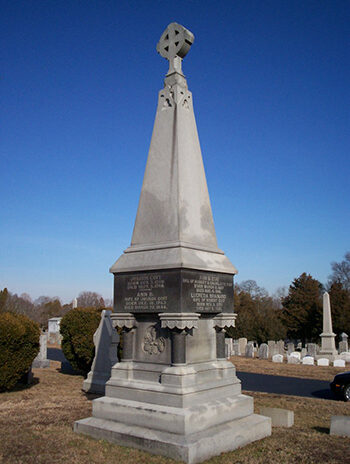
Harry Daghlian
Harry Daghlian
Birth 4 May1921 Waterbury, Connecticut
Death 15 Sept 1945 age 24
Harry Daghlian - Daghlian spent most of his childhood and teen years in New London. At the age of 17, he entered the Massachusetts Institute of Technology, where he studied physics. He transferred to Purdue University and graduated in 1942. In 1944, he began working on the Manhattan Project at Los Alamos, New Mexico. The project was working to develop atomic bombs during World War II. Daghlian died from radiation poisoning about a month after a criticality accident with the so-called “demon core” of the bomb at the laboratory. He became the first criticality accident victim.
Nicoll Fosdick
Nicoll Fosdick
Birth 9 Nov 1785 New London, Connecticut
Death 7 May 1868 age 82
U.S. Congressman. Moving to Norway, New York, he became a successful merchant. He was a presidential elector on the Monroe ticket in 1816 and a member of the New York State Assembly, (1818-19). In 1825, he was elected as an Adams candidate to the Nineteenth Congress, serving until 1827. After his term, he relocated to Connecticut, was a collector of customs at the Port of New London, (1849-53) and engaged in mercantile pursuits until his death at age 82.
Plot Section 8


Richard Patrick Freeman
Richard Patrick Freeman
Birth 24 April 1869 New London, Connecticut
Death 8 July 1944 age 75
U.S. Congressman. He graduated from Noble and Greenough’s Preparatory School Boston, in 1888, from Harvard University, in 1891, and from the law department of Yale University, in 1894. He was admitted to the bar and commenced to practice law in New London, Connecticut. He was a special agent for the Department of the Interior, (1896-98) and during the Spanish American War served as Major in the 3rd Regiment, Connecticut Volunteer Infantry, U.S. Army. After the war, he was the judge advocate of the Connecticut National Guard and prosecuting attorney for the City of New London, (1899-1901). In 1915, he was elected as a Republican to the Sixty-fourth Congress and to the next eight succeeding Congresses, serving until 1933. An unsuccessful candidate for re-nomination, he resumed the practice of law until his death at age 75
Plot Section 20


William Hayward
William Hayward
Birth 29 April 1877 Nebraska City, Nebraska
Death 13 Oct 1944 age 67
World War I U.S. Army Military Figure. Hayward graduated from the University of Nebraska in 1894, studied law. and was admitted to the bar and practiced law in Nebraska City, Nebraska. He also served in the Nebraska Volunteer Infantry Regiment, of the Nebraska National Guard, rising to the rank of Colonel in 1901. He served as an Otoe County judge, (1901-02) and moved to New York becoming the Assistant District Attorney of New York County, serving 1913-14. With the advent of World War I, New York Governor Charles S. Whitman appointed Hayward as Colonel of the 15th Infantry Regiment, New York National Guard. In post he organized and commanded the first African-American U.S. Army's 369th Infantry Regiment, known as the "Harlem Hellfighters”. Deployed to actions in France, the 369th spent 191 days in front line trenches, more than any other American unit and suffered the most losses of any American regiment with 1,500 casualties. Under Colonel Hayward’s command and despite severe losses, the 369th turned in a good account in heavy fighting, capturing important villages, advancing faster than French troops and became the first Allied unit to reach the Rhine River. The 369th with the French Croix de Guerre for gallantry, plus American decorations to including numerous Distinguished Services Crosses and two Medal of Honor awards. When Colonel Hayward and the 369th Infantry Regiment returned to the U.S., they received a hero’s welcome. They were the first unit to march up Fifth Avenue from the Washington Square Park Arch to their armory in Harlem, Hayward led the parade and their unit was placed on the permanent list with other veteran units. After the war, President Harding appointed Hayward U.S. Attorney for the Southern District of New York, serving until 1925 and after leaving office he practiced law and served as general counsel to the new American Professional Football League.

Joshua Hempsted
Joshua Hempsted
Birth 1 Sept 1678 New London, Connecticut
Death 22 Dec 1758 age 80
Joshua Hempsted - noted diarist of the Colonial era, it is thanks to Hempsted’s nearly daily diary entries from 1711 to 1758 that so much is known about daily life in Colonial New London. A shipwright, wheelwright, farmer, gravestone carver and local official, Hempsted recorded the weather, deaths, marriages, baptisms, court trials, notable and everyday occurrences for 47 years. He and his wife, Abigail, had nine children and he did not remarry after her death in 1716. Hempsted also was a slave owner. He purchased Adam Jackson in 1727. Jackson would live with and work beside Hempsted for 30 years. Hempsted died in 1758 and his grave was later moved to Cedar Grove.
Plot Section 20. Grave #12
Elisha Hinman
Elisha Hinman
Birth 9 March 1734 Woodbury, Connecticut
Death 29 Aug 1807 age 73
Revolutionary War Continental Naval Officer. Born the son of Mary Noble and Andrew Hinman in Woodbury, Connecticut. At fourteen, he went to sea, and by the age of 20 he was the captain of a merchantman vessel. In 1775, he accepted a lieutenant’s commission in the Continental Navy, he was in the first group of men to be commissioned in the United States Navy. He took command of the 'Cabot,' a brig, in 1776, and captured five British ships sailing from Jamaica. In 1777, he was commissioned as a Captain and took command of the 'Alfred.' He captured one merchantman vessel, then two larger ships from Jamaica which he ferried to France to be sold by American agents there. On his cruise back to the US in March, he was taken by two British ships and made a prisoner. He was incarcerated in Fortune prison on July 18. Five days later, he bribed the guards and walked away. He made his way to Dunkirk by August 11, but was without his ship. In August 1778, he returned to the US aboard the 'Providence' under Captain Whipple. In 1780, he took command of the gunboat 'Dean.' At war's end, the government was found to owe him 3,000 dollars in back wages; which was cleared by issuing a Government promissory note rather than cash. Desperate for funds, however, he was forced to sell the note for three shillings on the pound. He applied for command of a revenue cutter in a letter to John Adams in 1798, citing his former service, good health, lack of further ambition, and financial need. He received command of the federal revenue cutter 'Argus' following the death of the previous captain. He was replaced as captain in 1803, when he was 69 years old. He would die just four years later.
Plot Section 7


Lyman Law
Lyman Law
Birth 19 Aug 1770 New London, Connecticut
Death 13 Feb 1842 age 71
U.S. Congressman. He graduated from Yale College in 1791, studied law, was admitted to the bar in 1793 and commenced to practice in New London, Connecticut. Entering politics, he was a member of the Connecticut State House of Representatives, (1801-02, 06, 09-10, 19, 26). In 1811, he was elected as a Federalist to the Twelfth, Thirteenth, and Fourteenth Congresses, serving until 1817. After leaving Congress, he was again a member of the Connecticut State House of Representatives, (1819, 26). He also served as the sixth Grand Master of the Connecticut Masonic Lodge, (1821-22) and practiced law until his death. His son John Law, was also a U.S. Congressman.
Plot Section 2
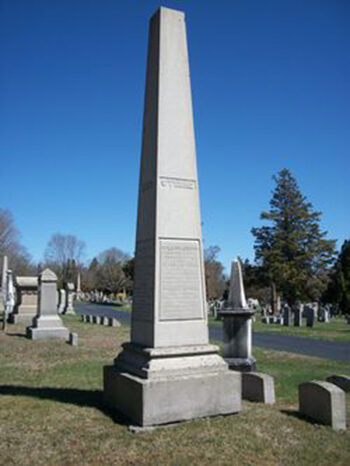
Richard Law
Richard Law
Birth 7 March 1733 Milford, Connecticut
Death 26 Jan 1806 age 72
Continental Congressman and jurist. He graduated from Yale in 1751, studied law and became an attorney in 1755. He served in the Connecticut Assembly in 1765. In 1776 Law became a member of the Connecticut Council of Safety. He also became a member of the Governor's Council, serving until 1786. Law served in the Continental Congress in 1777, and again from 1781 to 1782. In 1784 he became Chief Judge of the New London County Court and the Superior Court, and a Justice of the State Supreme Court, serving until 1789. While serving on the bench Law also served as Mayor of New London from 1784 until his death. In 1789 President Washington appointed him US District Judge for Connecticut, and he served until his death. Richard Law was the father of Lyman Law and the grandfather of John Law, both of whom served in Congress.


Amasa Learned
Amasa Learned
Birth 15 Nov 1750 Killingly, Connecticut
Death 4 May 1825 age 74
US Congressman. Elected to represent Connecticut as At-Large in the United States House of Representatives, serving from 1791 to 1795. Also served as a Member of the Connecticut State House of Representatives in 1779, and Delegate to the Connecticut State Constitutional Convention in 1818.
Plot Section 2
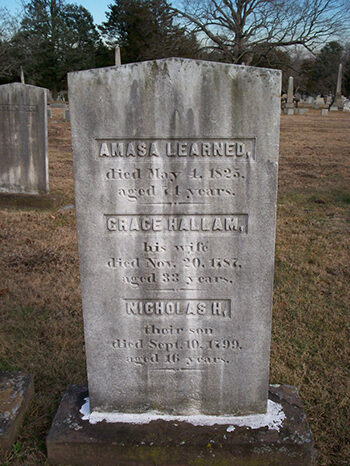
Ichabod Pease
Ichabod Pease
Birth 1755 Fishers Island, New York
Death 3 March 1842 age 86
Ichabod Pease - Pease spent his first 39 years enslaved by the Mumford family. In 1779, when his slaveholder, who was a Loyalist, planned to move south and take Pease with him, Pease escaped so he could remain with his wife. He spent two years as a fugitive in New London, was re-enslaved by John Deshon, and finally gained his freedom by manumission in 1794. In 1837, amid growing sentiment against racially integrated classrooms, Pease proposed to establish a school for Black children in the city. After school officials agreed to the proposal, Pease, now in his 80s, began operating the school in an area now near Gov. Winthrop Boulevard. The school operated for two years.
Plot Section B
Elias Perkins
Elias Perkins
Birth 5 April 1767 Lisbon, Connecticut
Death 27 Sept 1845 age 78
US Congressman. Elected to represent Connecticut as At-Large in the United States House of Representatives, serving from 1801 to 1803. Also served as Mayor of New London, Connecticut, as a State Court Judge, and as a member of the Connecticut State Legislature.
Plot Section 11


Morton Plant
Morton Plant
Birth 18 Aug 1952 New York City, New York
Death 4 Nov Dec 1918 age 67
Morton Plant - a wealthy industrialist who inherited most of his fortune from his father, railroad and steamship magnate Henry Bradley Plant, Morton Plant was born in Branford, but built a summer home in southeastern Connecticut and became known for his local philanthropy. He and his second wife, Nellie, who also is buried at Cedar Grove, built Branford House at Avery Point in 1903. The mansion is now the centerpiece of the Avery Point campus of the University of Connecticut. Plant also is known locally for the summer resort, the Griswold Hotel, he built at Eastern Point, Groton; for his yachting exploits; his large donations that made the establishment of Connecticut College possible and for his minor league baseball team that played at Plant Field (Now the area of Plant, Morton and Freeman Streets) in New London. Plant died in 1918 during the flu pandemic.
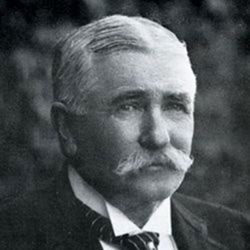
Mae Rovensky
Mae Rovensky
Birth 16 Oct 1880 Wethersfield, Connecticut
Death 22 July 1956 age 75
Mae Rovensky - Morton Plant’s third wife, Rovensky married two more times after Plant’s death. She was married to and divorced from Seldon Manwaring before marrying Plant. After Plant’s death, she married William Hayward and finally, John Rovensky, who was a banker and financier. A flashy socialite who enjoyed entertaining the wealthy and well-connected at her Newport, Rhode Island home, she was among the country’s wealthiest women by the time of her death in 1956. She died at her home, Clarendon Court, in Newport, but was buried in Cedar Grove, not far from the graves of Plant, his second wife, Nellie and their son, Henry.
Gustavus Woodson Smith
Gustavus Woodson Smith
Birth 30 Nov 1821 Georgetown, Kentucky
Death 24 June 1896 age 74
Civil War Confederate Major General. He graduated from West Point in 1842, was commissioned as an officer in the Army Corps of Engineers and served in the Mexican American War. After the war, he resigned his commission and became a civil engineer in New York City. At the start of the Civil War, he volunteered his service to the Confederate Army and was commissioned Major General in command of Northern Virginia, in September, 1861. He fought in the Battle of Seven Pines, the Peninsula Campaign and headed the Department of Richmond until January, 1863. In June, 1864, he was appointed Major General of the Georgia State Militia and commanded its first division to the end of the war. After the war, he became an iron manufacturer and served as the Kentucky Insurance Commissioner.
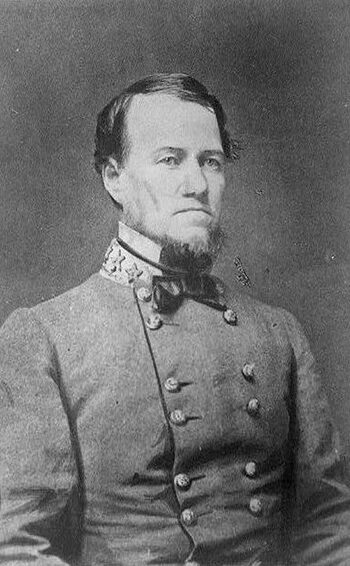
Benjamin Stark
Benjamin Stark
Birth 26 June 1820 New Orleans, Louisiana
Death 10 Oct 1898 age 78
U.S. Senator. After graduating from Hebron Academy Maine, he engaged in mercantile pursuits in New York City (1835-48). Moving to San Francisco, California, he engaged in mercantile pursuits (1849-50), moved to Oregon, studied law, was admitted to the bar and commenced to practice law in Portland. He was a member of the Oregon Territorial House of Representatives in 1852, served as a Army Colonel in the Oregon Indian hostilities in 1853 and was a member of the Oregon State House of Representatives in 1860. In 1861, he was appointed as a Democrat to the United States Senate to fill the vacancy caused by the death of Edward D. Baker, serving until 1862. Not a candidate for election, he moved to Connecticut, was a member of the board of aldermen of New London (1873-74), was a member of the Connecticut State House of Representatives in 1874 and a member of the Connecticut State Prison Commission, until his death.
Plot Section 24 Lot 1

Benjamin Babock Thurston
Benjamin Babock Thurston
Birth 26 June 1804 Hopkinton, Rhode Island
Death 17 May 1886 age 81
U.S. Congressman. He engaged in mercantile pursuits, entered politics, was a member of the Rhode Island State House of Representatives (1831-37), and Lieutenant Governor of Rhode Island in 1838. In 1847, he was elected as a Democrat to the Thirtieth Congress serving until 1849, reelected to Thirty-second and Thirty-third Congresses and as a candidate of the American Party to the Thirty-fourth Congress, serving (1851-57). Not a candidate for re-nomination, he moved to New London, Connecticut, was a member of the board of aldermen (1862-63), a member of the Connecticut State House of Representatives (1869-70), and resumed mercantile pursuits until his death.
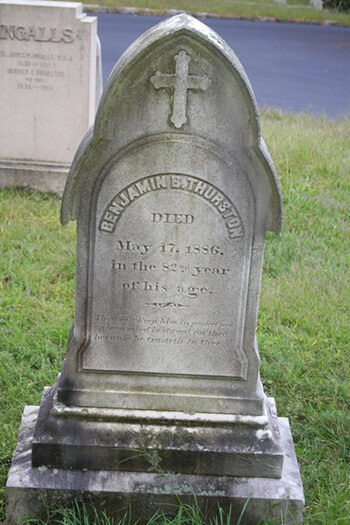
Thomas McDonald Waller
Thomas McDonald Waller
Birth 15 Feb 1839 New York, New York
Death 25 Jan 1924 age 84
Connecticut Governor. Served as the Governor of Connecticut from 1883 to 1885.
Plot Section 8


George C. Williams
George C. Williams
Birth 9 Dec 1839 England
Death 14 Nov 1926 age 86
Civil War Congressional Medal of Honor Recipient. He served as a Quartermaster Sergeant in the Union Army in the 14th US Infantry, 1st Battalion. He was awarded the Medal of Honor for action on June 27, 1862 at Gaines' Mill, Virginia. His citation reads "While on duty with the wagon train as quartermaster sergeant he voluntarily left his place of safety in the rear, joined a company, and fought with distinguished gallantry through the action."
Plot Section 14, Lot 1
Thomas Wheeler Williams
Thomas Wheeler Williams
Birth 28 Sept 1789 Stonington, Connecticut
Death 31 Dec 1874 age 85
Thomas Wheeler Williams - born in Stonington, Williams became a prominent and early figure in New London’s whaling business in 1818. Williams and Daniel Deshon are credited with kicking off the city’s whaling boom when they outfitted and sent out two whaling vessels in 1819. Williams was one of New London’s top whaling agents, responsible for finding investors for, outfitting and securing captain and crew for whaling ships. The Williams family established Williams Memorial Institute, now called the Williams School, and gave the city two parks - one at Broad and Williams streets and the other at Broad and Hempstead streets. He died in 1874.
Plot Section 3

